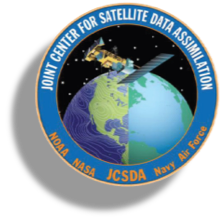Article By Dr. Cheng Dang and Dr. Benjamin Johnson, CRTM
The Community Radiative Transfer Model (CRTM), developed at the Joint Center for Satellite Data Assimilation (JCSDA), is operationally used for remote sensing aerosol data assimilation. Aerosols are tiny liquid and solid particles suspended in the atmosphere, such as windblown dust, sea salt, and PM2.5. These particles often absorb or scatter sunlight, interact with clouds, impact air quality, and are therefore crucial for climate research, weather forecast, and public health. The estimated distribution of atmospheric aerosols is primarily improved by assimilating aerosol retrieval products, with CRTM as a bridge between observational and modeling data. To further facilitate and enhance aerosol modeling, the CRTM team released a new model interface and sets of recently implemented aerosol coefficients since 2020.
With the release of CRTM version 2.4 in October 2020, we introduced a NetCDF interface for pre-computed aerosol coefficients. Besides the default binary format, CRTM now provides optional look-up tables in the NetCDF-4 format.
Meanwhile, we expanded the aerosol schemes to include more coefficient look-up tables based on various aerosol models, including:
(1) the Community Multiscale Air Quality Modeling System (CMAQ) model (released in CRTM version 2.4).
(2) the Goddard Chemistry Aerosol Radiation and Transport (GOCART) model used in Goddard Earth Observing System Model version 5 (GEOS-5).
(3) the Naval Aerosol Analysis and Prediction System (NAAPS) model.
The latter two will be released with CRTM version 2.4.1 soon.
Our goal was to make the CRTM optical coefficients more accessible and help users select a suitable set of aerosol properties given their target operational model. The figures below illustrate the CRTM-simulated aerosol optical depth (AOD, the magnitude of light absorbed and scattered by aerosols) for dust at 550 nm, with multiple aerosol schemes. The input dust profiles are from the MERRA-2 climatology with column-integrated concentration shown in Figure a. Compared to the average dust AOD shown in Figure b, AOD simulated using various aerosol schemes can be higher or lower by 30%-40%. These differences across scenarios are due to the spread of the assumed aerosol extinction coefficients, which are essentially determined by aerosol specifications (type, optical constant, size, shape) but often subject to operational requests.
Figure a. Column total dust concentration of May (MERRA-2 climatology data courtesy of Dr. Cheng-Hsuan (Sarah) Lu and Dr. Arlindo M da Silva) and Figure b. the corresponding AOD simulated using CRTM, averaged over four aerosol schemes. Figure c. shows the percentage differences in AOD computed using each aerosol scheme currently available in a CRTM developing version.
These developments of CRTM highlight a remaining and known issue in aerosol data assimilation induced mainly by the differences in instrument design, aerosol model assumptions, and data processing. Examining and constraining such uncertainty requires a flexible system that is just now available in JCSDA. The CRTM team and collaborators are performing more rigorous tests for its impact on the weather forecast. Aside from the operational application, CRTM can also be used as a standalone radiative transfer model. The insight we gain will benefit the scientific community in general.

